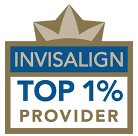Orthodontic Treatment: Commonly Asked Questions
What is the real meaning of the word “orthodontics”?
Orthodontics, which is also called dentofacial orthopedics, can help you fix problems with your teeth as well as facial structure.
What does an orthodontist do?
To become an orthodontist, you need to go to school and work for an extra two to three years. Some of the goals of orthodontic treatment are to fix a patient’s jaw structure and make their smile work better.
What is the best age to start seeing an orthodontist?
You can see an orthodontist at any age if you want to improve how your smile looks and feels. Children should see an orthodontist for the first time around age 7. However, one in five orthodontic patients is over the age of 21, so treatment isn’t just for kids and teens. You or your child can see an orthodontist at any time.
How do I take care of my teeth if I have braces or a retainer?
- Don’t forget to brush and floss your teeth every time you eat.
- Ask your orthodontist if you need a fluoride rinse, and use toothpaste with fluoride. Make sure to brush your teeth and floss twice a day.
- Take out your retainer before you eat so you can clean and floss your teeth. Put it back in its case to keep it from getting lost or broken.
- Flossing between your teeth and gently brushing your retainer with toothpaste and a toothbrush can help keep it clean. Or, your orthodontist may tell you to soak it in a solution for cleaning dentures. Don’t put your retainer in the dishwasher or hot water.
- Plaque and cavities are caused by bacteria growing in your mouth, so avoiding sugary meals can help you avoid getting them.
- Don’t eat hard or sticky foods like caramel, chewing gum, or gummy bears. Also, don’t eat anything that could get stuck in your braces, like hard candies, nuts, or ice cubes (corn on the cob, soft bagels, ribs, taffy, etc.).
- Set up regular checkups with your dentist by making an appointment. A good rule of thumb is to go to the dentist every six months.
What are braces?
The purpose of braces is to straighten your teeth.
Your orthodontist will help you get a better smile by giving you braces. Some types of braces are:
- Clear braces
- Ceramic braces
- Lingual braces
- Self-ligating braces
- Invisible braces
If I get braces, how long will I have to wear them?
Because each patient’s smile responds differently to treatment, the length of time spent in braces will vary. There are different kinds of treatments that can last from 6 to 30 months, but most of them last 22 months or less.
Is it painful to wear braces?
After getting braces, your teeth, gums, cheeks, and mouth may feel a little sore for a few days as your mouth gets used to them.
Do I need to brush my teeth more often if I get braces?
When you have braces, you need to brush your teeth at least three times a day to keep your teeth, gums, and mouth healthy. Brush your teeth often to keep food from getting stuck in your braces. You’ll need to floss every day to clean the places your toothbrush can’t reach. Once you have your braces on, your orthodontist may show you how to brush and floss properly.
Do I still need to see the dentist every six months if I have braces?
Yes! Even more so, orthodontic patients need to go to the dentist often. Food can get stuck in your braces in places where you can’t reach it with your toothbrush. The germs that build-up could cause gum disease, gingivitis, and other problems with oral health. Your dentist and orthodontist will work together to make sure your teeth stay clean and healthy while you wear braces.
Can I sing or play an instrument while I have braces on?
At first, wearing braces may make it hard to play an instrument or take part in a contact sport, but this won’t stop you from doing any of your school activities. If you play a contact sport, you should definitely wear a mouthguard to protect your braces or other orthodontic devices.
















